- JST Home
- /
- Strategic Basic Research Programs
- /
 ACT-X
ACT-X- /
- Research Director/
- Innovations in Mathematical and Information Sciences to Build the Next-Generation AI/
- [NextAI-math-info] Year Started : 2024
[NextAI-math-info] Year Started : 2024
Ryosuke Isono
Ultra-robust satellite image synthesis based on mathematical and learning fusion models
Grant No.:JPMJAX24C1
Researcher
Ryosuke Isono

Ph.D student
School of Computing
Institute of Science Tokyo
Outline
Detailed and accurate Earth observation requires satellite imagery with high spatial, temporal, and spectral resolution. However, there is a trade-off between these resolutions due to differences in the satellites and sensors used. In addition, data degradation such as noise, outliers, clouds and fog are inevitable in the process of satellite measurements. This research aims to realize “robust satellite image fusion,” in which multiple image sequences are synthesized while separating degradation, to obtain image data with high resolution and no degradation, making the most of mathematical optimization and deep learning.
Hayato Idei
Constructing neurodynamical models of cognitive autonomy
Grant No.:JPMJAX24C2
Researcher
Hayato Idei
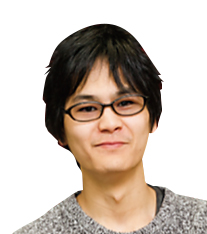
Section Chief
National Institute of Neuroscience
National Center of Neurology and Psychiatry
Outline
The construction of brain models (AI) with autonomy is a critical topic for elucidating the principles of human intelligence and realizing a society where humans and AI coexist harmoniously. However, the mechanism by which autonomy emerges within the brain’s computational processes, understood as a specific optimization problem, remains unclear. In this project, I construct a neurodynamical model that integrates spontaneous behavior generation, multimodal sensory integration, and continual learning. From the perspective of cognitive mode switching (dynamic adjustment of the loss function to be minimized) within free energy minimization, I aim to establish a computational theory of cognitive autonomy.
Yu Inatsu
Extending tight optimization method for black-box function maximization to other settings
Grant No.:JPMJAX24C3
Researcher
Yu Inatsu
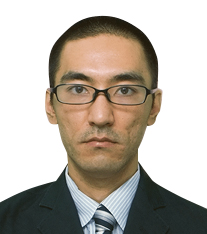
Associate Professor
Department of Computer Science
Nagoya Institute of Technology
Outline
In practical applications, black-box function optimization is frequently used. Recently, a Bayesian optimization method called IRGP-UCB has been proposed. However, while this method can be applied to maximization problems, it is unknown whether it can be extended to various other settings. In this study, I develop an extension of IRGP-UCB for typical settings other than maximization problems, such as robust optimization and Pareto optimization problems, and derive theoretical guarantees and verify practical performance through numerical experiments.
Haruhiko Iwaoki
Development of Primate VR Experimental Paradigms for Curiosity-Driven AI
Grant No.:JPMJAX24C4
Researcher
Haruhiko Iwaoki
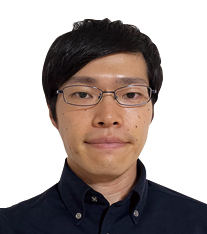
Postdoctoral Researcher
Institute for Quantum Medical Science
National Institutes for Quantum Science and Technology
Outline
Curiosity drives us to action even in uncertain environments with no apparent rewards, much like the real world. This curiosity mechanism has garnered attention in neuroscience and information science fields such as AI and robotics; however, its true nature remains unclear. This research project aims to integrate information science and neuroscience by developing innovative VR experimental systems for primates to elicit curiosity. The study seeks to identify the environmental factors that generate curiosity and the underlying neural mechanisms through this approach. Ultimately, the goal is to contribute to developing next-generation, curiosity-driven AI.
Ryo Ueda
Emergent Communication among LLMs as Multimodal Representation Learning
Grant No.:JPMJAX24C5
Researcher
Ryo Ueda

Graduate Student
The Graduate School of Information Science and Technology
The University of Tokyo
Outline
In the contemporary era, where Large Language Models (LLMs) are being integrated into real-world robotics, differences in sensations and physicality between humans and LLMs may hinder linguistic communication. This research addresses the problem of allowing LLMs with different input and output modalities to create a common language (as a form of emergent communication in multimodal representation learning), exploring new directions for linguistic communication in the coming era.
Yui Uehara
Unsupervised learning of harmonic analysis incorporating the musical score simplification
Grant No.:JPMJAX24C6
Researcher
Yui Uehara
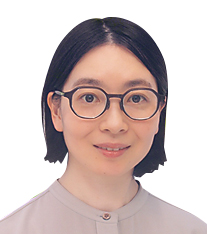
Assistant Professor
Faculty of Informatics
Kanagawa University
Outline
Human experts can build simply describable knowledge from limited learning, in contrast to a large-scale, black-box AI. The harmony theory and the harmonic analysis based on the theory in music is a good example of such human knowledge. This research attempts to acquire regularity in harmonic progressions and perform harmonic analysis in an unsupervised manner. The process of removing non-chord tones from the musical score and simplifying them into chord symbols is performed simultaneously and interdependently with the harmonic analysis.
Kento Uchida
Theory and Applications for Safety Improvement of Optimization with Real-World Evaluations
Grant No.:JPMJAX24C7
Researcher
Kento Uchida
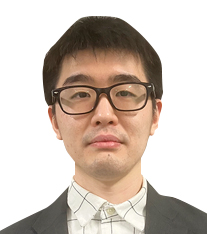
Specially Appointed Assistant Professor
Organization for the Promotion of Education
Yokohama National University
Outline
In optimization problems that appear in the medical and engineering fields, solution evaluations are sometimes conducted in real-world environments. However, these evaluations can involve certain risks. The use of simulators has helped to avoid dangerous evaluations; however, challenges such as production costs and dealing with sim-to-real issues have arisen. This project aims to achieve safe optimization that avoids risky evaluations in real-world environments by building theories related to optimization safety and developing relevant algorithms.
Bowen Wang
Diagnostic reasoning for clinical notes using large-scale language models
Grant No.:JPMJAX24C8
Researcher
Bowen Wang

Assistant Professor
Institute of Scientific and Industrial Research
The University of Osaka
Outline
Large-scale language models (LLMs) have recently demonstrated excellent capabilities across a wide range of tasks and applications, including in the medical domain. Models such as GPT-4 excel at answering medical questions, but lack accuracy and interpretability when dealing with complex tasks in real clinical settings. In this study, we use a structured method based on LLMs to clearly and logically reason about diagnostic results, which can also improve the accuracy and interpretability of the results.
Shunsuke Kando
Building Spoken Dialogue System without Textual Supervision
Grant No.:JPMJAX24C9
Researcher
Shunsuke Kando
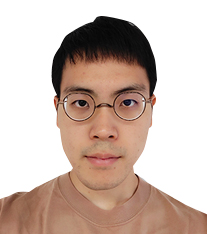
Graduate Student
Graduate School of Information Science and Technology
The University of Tokyo
Outline
This research examines the way to build spoken dialogue systems with the supervision of speech resources without the need for text resources. Recent studies have pointed out that the existing systems lack the ability to generate meaningful speech utterances. This study aims to solve this problem by extracting word-like units from speech signals in an unsupervised manner. This research will make it possible to extend spoken dialogue systems to various cultural spheres and domains, leading to the realization of an inclusive AI society.
Yusuke Kunimi
Voide Feedforward: Investigating the Acquisition of Additional Voice Quality through Auditory Feedforward.
Grant No.:JPMJAX24CA
Researcher
Yusuke Kunimi
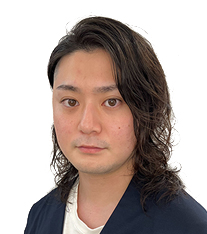
Specially Appointed Research Scientist
Research Institute on Human and Societal Augmentation
National Institute of Advanced Industrial Science and Technology
Outline
I aim to achieve voice feedforward which the intended future speech content is synthesized with other voice and presented audibly. Futuremore, I will examine voice feedforward enhances immersion in any given voice quality presented and induces cognitive changes. I will also investigate whether it is possible to aquire a voice quality that triggers such cognitive changes.
Satoshi Kosugi
A Method for Generating Visual Explanations through Interactions
Grant No.:JPMJAX24CB
Researcher
Satoshi Kosugi

Assistant professor
Institute of Integrated Research
Institute of Science Tokyo
Outline
In this research, I aim to develop a method for automatically generating ‘visual explanations,’ where complex concepts and information are illustrated through visual representations. I plan to develop two models: 1) an image generation model capable of producing visual explanations, and 2) a language model that enables interactive, customizable generation of these explanations. By integrating these models, I seek to provide explanations that adapt to the user’s understanding and requests. This approach is expected to drive innovation in information communication across various fields such as education, healthcare, and business.
Kazuma Sawaya
Development of Deep Variable Selection Techniques to Foster Scientific Discoveries
Grant No.:JPMJAX24CC
Researcher
Kazuma Sawaya
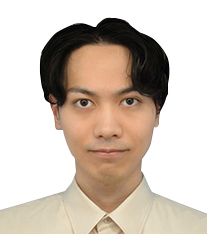
doctorial student
Graduate School of Economics
The University of Tokyo
Outline
This project addresses the challenging task of inferring relationships between variables from complex real-world observations. Specifically, it aims to refine two main components of variable selection methods—(i) the computation of importance scores for each candidate variable, and (ii) the selection of variables through thresholding of the computed scores—using theoretical insights from deep neural networks (DNNs). The goal is to develop a methodology for scientific discovery that controls the false discovery rate below a preassigned level.
Kazuyuki Shoji
Multimodal AI for Understanding and Retrieving Spatio-Temporal Data
Grant No.:JPMJAX24CD
Researcher
Kazuyuki Shoji
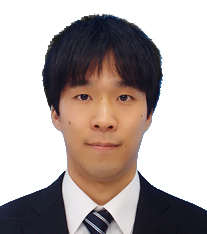
Ph.D. Student
Graduate School of Engineering
Nagoya University
Outline
In this study, we develop a multimodal AI, MobAI, that integrates mobility data and natural language to facilitate the understanding of mobility data through natural language. MobAI supports analysts in interpreting the meaning of mobility data and promotes the utilization of such data by non-analysts. By addressing the challenges of mobility data analysis complexity and privacy concerns in inter-company data sharing, MobAI aims to support data-driven decision-making across various fields, including urban planning and commercial strategy development.
Hirofumi Suzuki
Studies on Model Update for Smooth Collaboration between Humans and Predictive Models
Grant No.:JPMJAX24CE
Researcher
Hirofumi Suzuki
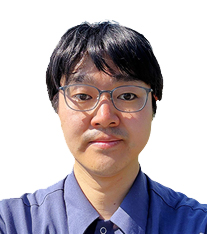
Researcher
Fujitsu Research
Fujitsu Limited
Outline
In decision-making based on predictive models, users gradually become able to guess the reliability of predictions. On the other hand, predictive models sometimes require updates to maintain their prediction accuracy. After updating predictive models, maintaining the productivity of decision-making is not easy because the behavior of the predictive models changes, and the user cannot guess the reliability in the same way as before the model updates. This research aims to realize model update techniques that make it easier for users to revise their reliability guesses and easily maintain the productivity of decision-making by focusing on changes in prediction results and the basis of predictions.
Shuto Takashita
Operating Extended Bodies through Delegation of Unconscious Movements to AI
Grant No.:JPMJAX24CF
Researcher
Shuto Takashita
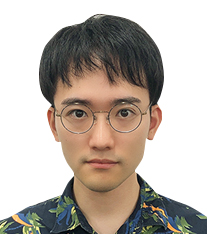
Ph.D. student
Graduate School of Interdisciplinary Information Studies
The University of Tokyo
Outline
In this research, I aim to realize the operation of extended bodies with greater degrees of freedom than innate bodies by allowing AI to control human unconscious movements in place of the subject. This will allow conscious operational inputs to be distributed over multiple parts of agent bodies (avatars). This system combines an AI system that predicts and reproduces subsequent movements based on previous actions that reflect human intentions, with a force-haptic feedback system that assists in switching operations for multiple body parts, thereby enabling the time division of operational inputs.
Takashi Takahashi
Development of variational methods for the explanation and understanding of learning systems
Grant No.:JPMJAX24CG
Researcher
Takashi Takahashi
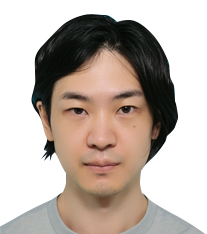
Assistant Professor
Institute for Physics of Intelligence
The University of Tokyo
Outline
The theoretical explanation and understanding of the learning systems is one of the fundamental elements of data science. The theoretical analysis so far has explored fundamental aspects that hold independent of the details of the setting. However, as learning tasks become more complex, giving quantitative theoretical prediction in specific real-world settings has become challenging. In this study, we aim to establish a framework for inferring mathematical models that approximate the behavior of learning systems, which will help develop a methodology to bridge the gap between theory and reality.
Ning Ding
Unraveling Dynamic Coordination Mechanisms for Tactical Scene Analysis in Racquet Sports
Grant No.:JPMJAX24CH
Researcher
Ning Ding
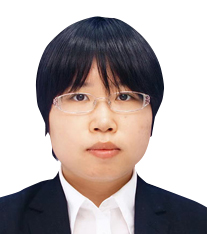
Assistant Professor
Faculty of Information Engineering
Nagoya Institue of Technology
Outline
This research aims to explore and understand the mechanisms of player coordination in response to evolving tactical dynamics in racquet sports. By leveraging reinforcement learning, the study seeks to model the adaptive strategies players employ when faced with tactical changes in-game scenarios. Furthermore, the research develops a framework for tactical scene interpretation, utilizing a multimodal Transformer model to analyze and generalize insights across diverse tactical situations within racquet sports.
Kazuki Nakajima
Inference and visualization of higher-order community structure based on stochastic block models
Grant No.:JPMJAX24CI
Researcher
Kazuki Nakajima

Assistant Professor
Graduate School of Systems Design
Tokyo Metropolitan University
Outline
Computational methods are needed to accurately infer and visualize higher-order community structure (i.e., groups of individuals who interact closely with each other) by representing a social network with a hypergraph that involves high-order interactions among three or more individuals. In this project, I study stochastic block models for inferring higher-order community structure by considering structural characteristics of empirical hypergraphs. I also develop a framework for embedding nodes in a low-dimensional space while accurately preserving inferred higher-order community structure.
Mikito Nanashima
Computational Complexity of Learning and Compression
Grant No.:JPMJAX24CJ
Researcher
Mikito Nanashima

Assistant Professor
School of Computing
Institute of Science Tokyo
Outline
We investigate the relationships between the description size of hypotheses, computational complexity, and precision in the context of learning and compression. Building on this foundation, we aim to make progress toward resolving the important open quest
Naoki Nishikawa
Statistical Analysis of Attention Mechanisms for Developing Efficient Models
Grant No.:JPMJAX24CK
Researcher
Naoki Nishikawa

First-year PhD student
Graduate School of Information Science and Technology
The University of Tokyo
Outline
The network architecture called Transformer has achieved remarkable success as the standard for foundation models. The high performance of Transformers is due to the attention mechanism. One challenge with the attention mechanism is its high computation cost. While some alternatives with lower cost have been proposed, their capabilities are inferior to those of the attention mechanism. In this study, we investigate the capabilities of the attention mechanism and alternative methods based on statistical theory. We first identify the situations where the attention mechanism can be replaced by alternative methods without a loss in performance. Then, we aim to establish a methodology for developing efficient and high-performing networks.
Takaaki Nishimoto
Developing compressed data structures achieving an information-theoretic lower bound
Grant No.:JPMJAX24CL
Researcher
Takaaki Nishimoto

Researcher
AIP
RIKEN
Outline
Recently, the size of string datasets has grown rapidly. To process such massive datasets within practical time and memory constraints, it is crucial to develop data structures that efficiently answer queries on the data. Memory usage can be reduced by employing data compression techniques, and there is an information-theoretic lower bound for memory usage, referred to as the δ-optimal space. This project aims to develop compressed data structures that not only achieve the δ-optimal space but also efficiently process various queries.
Akari Haga
Efficient Multimodal Language Model Based on Imitation of Child Speech Errors
Grant No.:JPMJAX24CM
Researcher
Akari Haga
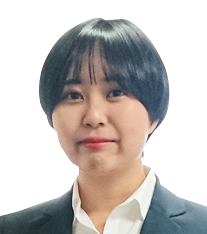
1st year Ph.D. student
Leading-edge Science and Technology
Nara Institute of Science and Technology
Outline
While current large language models achieved remarkable success, they still required large amounts of data for training. In contrast, children acquired language with limited resources. In the field of first language acquisition, previous research suggested that the errors made by children during the acquisition process are crucial for efficient language learning. This project aimed to improve the learning efficiency of multimodal language models by imitating the typical errors made by children when associating visual information with language.
Kohei Honda
Safe Reinforcement Learning for High-Speed Autonomous Agents Under Uncertainty
Grant No.:JPMJAX24CN
Researcher
Kohei Honda
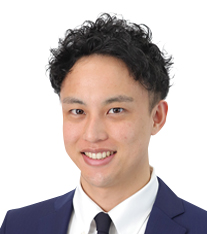
Assistant Professor
Graduate School of Engineering
Nagoya University
Outline
This research aims to develop and implement an online safe reinforcement learning framework for controlling high-speed autonomous agents. To address uncertain dynamics and safety constraint models in high-speed domains, we will utilize reinforcement learning combined with probabilistic inference-based optimal control. This approach allows us to acquire adaptive and optimal policies while satisfying safety constraints. Ultimately, this project aims to realize a “trusted high-speed autonomous control AI” capable of safely learning superhuman control in real-world environments.
Koki Madono
Development of a Drawing Path Generation AI Capable of Decomposing Completed Images
Grant No.:JPMJAX24CO
Researcher
Koki Madono
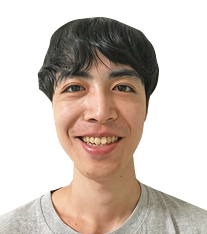
Assistant Professort
Faculty of Science and Engineering
Waseda University
Outline
Research into generative AI for various users, including art enthusiasts, painters, and traditional technique successors, is currently thriving. While generating images through AI is now feasible, generating drawing sequences from images—a task known as drawing sequence generation—remains a challenging problem due to issues with poor settings, and current technology does not yet achieve the precision that satisfies users. This research aims to develop a new AI that optimizes drawing sequence estimation from human drawing data, addressing this as a well-posed problem and achieving more plausible results.
Chiaki Miura
Push Citation: Peer Review Mechanism without Monetary Incentives
Grant No.:JPMJAX24CP
Researcher
Chiaki Miura

PhD
Faculty of Engineering
The University of Tokyo
Outline
Demand for a quality and efficient reviewer assignment is increasing faster. I suggest a “push” in academic citation, integrating the newer scientific findings into a more extensive, ever-growing literature. The mechanism is built on the recent success of post-publication peer review. Learning from open-source software (OSS) development, I demonstrate how citation metrics can incentivize reviewers. This project will focus on the literature recommendation to tell the authors which literature to push their work. I construct a graph neural network model where each article corresponds to a subgraph of a knowledge graph constructed from the existing literature.
Yamato Miyatake
Personalized Food Fabrication System for Optimizing Taste Based on Individual Perception and Preferences.
Grant No.:JPMJAX24CQ
Researcher
Yamato Miyatake
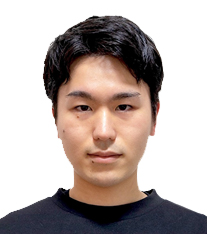
Doctoral Degree Program
Graduate School of Science and Engineering
Saitama University
Outline
In recent years, the demand for personalized food has been rapidly increasing due to the diversification of dietary habits and the growing awareness of health. Traditional systems provide food based on databases, but individual tastes and preferences vary and change over time, making personalized optimization necessary. In this study, we aim to develop an AI that learns individual preferences and a food fabrication system that controls flavor, with the goal of constructing a system that optimizes the taste of food for each individual.
Yoàv Montacute
Symmetry in AI: Combinatorial Topological Methods for Next-Generation AI
Grant No.:JPMJAX24CR
Researcher
Yoàv Montacute

Project Researcher
National Institute of Informatics
Research Organization of Information and Systems
Outline
Artificial intelligence prediction methods excel at mimicking human responses, but formal and logical reasoning remains a challenge. This research explores novel approaches to applying complex mathematical structures to AI and formally verifying their properties, as well as accelerating AI’s inferential computations using these structures. Through this innovative approach, we aim to establish a theoretical foundation for enhancing AI’s logical reasoning capabilities, contributing to the development of more sophisticated decision-making systems.
Ryosuke Yamaki
Exploration of Creative Language Use by LLMs Based on the Integration of Syntax and Semantics
Grant No.:JPMJAX24CS
Researcher
Ryosuke Yamaki
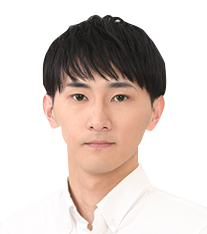
Ph.D. Student
Graduate School of Information Science and Engineering
Ritsumeikan University
Outline
This study aims to computationally elucidate the mechanisms underlying the creative use of language, a cognitive function unique to humans, by integrating Holographic CCG, a syntactic parsing model based on Combinatory Categorial Grammar, with large language models and enabling interaction between these models. Through this approach, I seek to advance academic understanding of human cognitive functions while also enhancing advanced language use by AI and improving AI alignment.
Taiki Yamada
Extended Learning Theory of Dynamical Systems Considering the Finiteness of Data
Grant No.:JPMJAX24CT
Researcher
Taiki Yamada
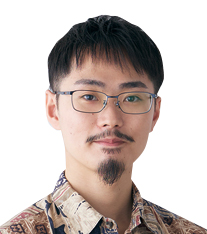
Graduate Student
The Graduate School of Information Science and Technology
The University of Tokyo
Outline
Research on the generalization performance and interpretability of AI, which has contributed to the development of trustworthy AI, can be understood as efforts to ensure reliability while considering the finiteness of data quantity and quality. In this study, we address the meta-question of ‘what kind of behavior can be guaranteed for AI under the finiteness of data’ by analyzing learning tasks of dynamical systems. Through studying the mathematical structures inherent in these tasks, we aim to characterize intelligence that is learnable and interpretable by humans.
Zihui Li
Improving the Trustworthiness of Japanese Medical Text Generation Tasks with LLMs
Grant No.:JPMJAX24CU
Researcher
Zihui Li
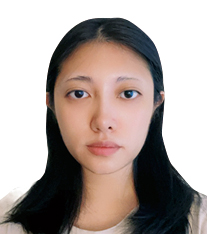
Project Lecturer
School of Engineering
The University of Tokyo
Outline
AI is becoming more important in healthcare, helping with tasks like answering medical questions and giving treatment advice. This project aims to make AI better at answering medical questions by using a large language model (LLM) that can give more accurate answers with the help of a medical knowledge graph. The project will also work on improving other types of medical text generation and will create a high-quality Japanese medical dataset to further improve the AI’s performance in medical tasks.













